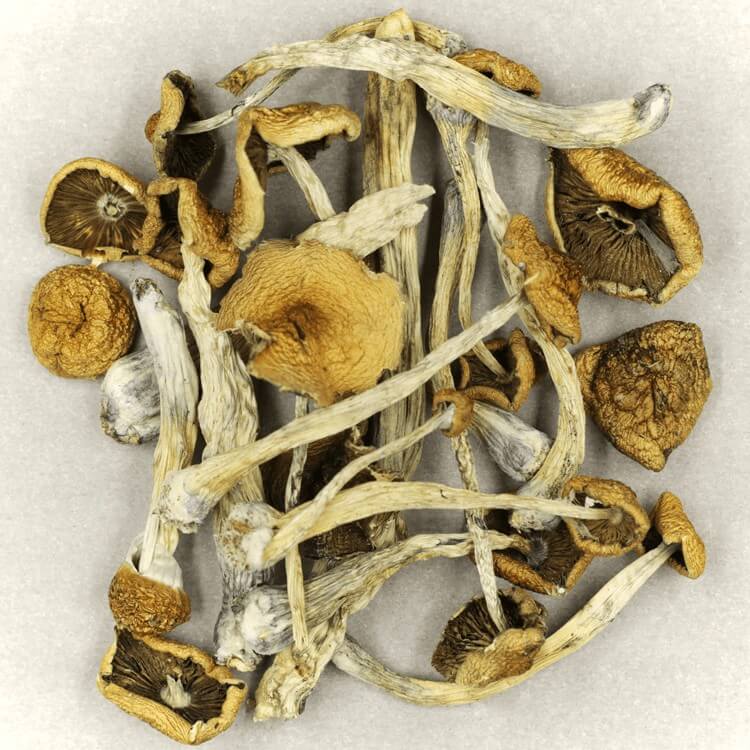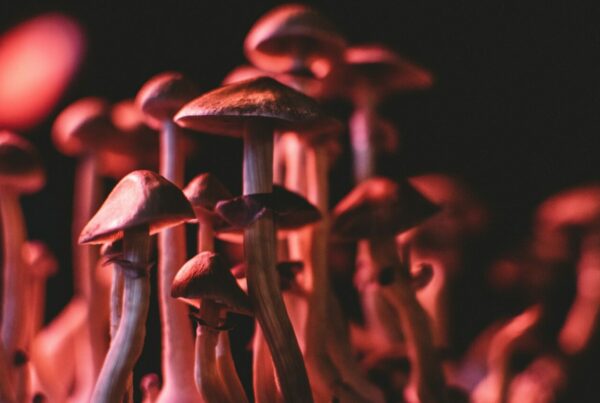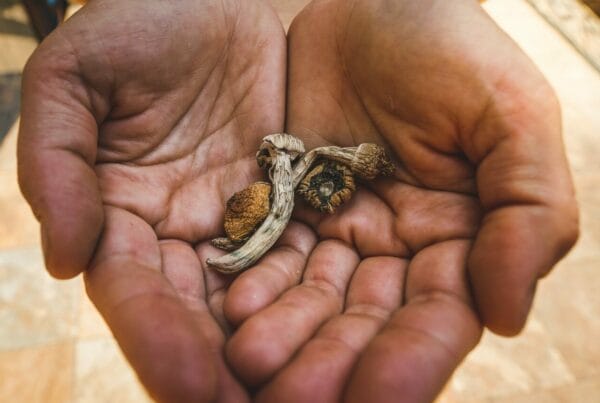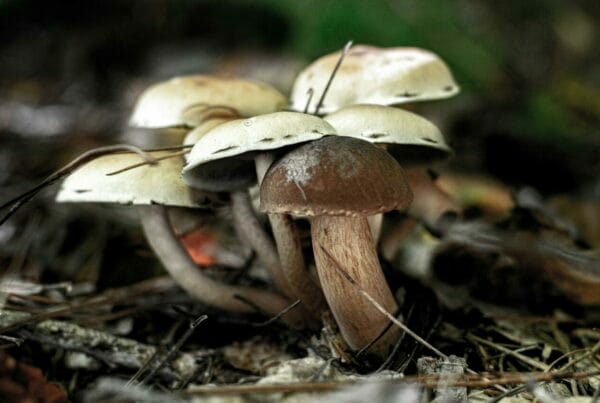Once thought of as purely mythical, the strength of Psilocybe mexicana is now scientifically acknowledged due to advances in psilocybin research. The psychedelic research community is unveiling its therapeutic potential, leading to a gradual acceptance within the medical industry. This budding field is seen as promising by experts, who are tirelessly working to set safe dosage guidelines for its medicinal application.
Key Takeaways
- Researchers are utilizing advanced techniques such as liquid chromatography in tandem with mass spectrometry to measure mushroom potency.
- Psilocybe Mexicana, among other mushroom varieties, is being clinically tested to explore its potential therapeutic applications.
- Understanding the genetic diversity in magic mushrooms is crucial for creating an accurate dosage guide.
Psychedelic Mushrooms: From Myth to Medical Breakthroughs
In the past, only a limited number of conditions were believed to benefit from Psilocybe Cubensis. Today, however, psilocybin research is uncovering a treasure trove of medicinal properties.
Researchers are harnessing the power of Psilocybe Mexicana and other potent strains for extensive studies and clinical trials. Whether in vivo or in vitro, these strains are proving effective in revealing the true effects and benefits of these fungal species.
Psychedelics on the Rise
No longer shrouded in mystery, the potential of psychedelics is being unveiled, sparking interest especially among those seeking therapeutic alternatives. Conventional mental health treatments often leave gaps, leading individuals to seek more effective options.
Enter the magic mushrooms.
Patients suffering from mental health disorders are resorting to psilocybin, which has shown effectiveness in treating depression, alcohol dependency, anxiety, compulsive behaviors, chronic pain, and more.
Practitioners are currently investigating innovative ways to establish accurate dosage for safe patient administration. A research group from the University of Texas, in particular, has designed a model to quantify psilocybin and psilocin levels.
The potency of magic mushrooms can be clinically determined.
Distinctive Features of Mexicana
Golden Teachers, Blue Meanies, and B-Plus are mushroom strains that have been thoroughly researched. For a comprehensive understanding of safe magic mushroom consumption, it is imperative that we investigate additional species.
The Mexicana species has risen in popularity for research due to its age-old existence and relatively low potency, which could potentially meet medical drug standards.
Despite its less potent nature compared to other strains, the Mexican variety can produce the same effects as more widely-known strains. As microdosing gains traction among patients, this strain presents a promising option.
With consistent levels of psilocybin and psilocin, similar to other strains, why would one prefer this strain? Its historical and anthropological relevance offers a compelling answer.
Delving Into a Rich “Mexican” Past
In ancient times, psilocybe mexicana naturally sprouted in moss. Indigenous communities held these psilocybin mushrooms in high esteem due to their versatile applications, often linked to spiritual or supernatural occurrences.
Let’s shift our focus to Mexican mushrooms. These mushrooms have been in use for over 2000 years, first by the natives of North and Central America. The Aztecs, an ancient civilization, named these mushrooms as the “food of the Gods,” or “teonanácatl” in their local dialect.
If the Aztecs were present today, they would attest to the transformative, emotionally profound, and mentally grounding impacts of the Mexicana—even without comprehending these contemporary terminologies.
Despite various cultivation techniques, this mushroom strain has successfully preserved its natural psilocybin levels, proving its genuineness. This authenticity is a widely recognized standard that researchers and psychedelic research institutions considerably esteem.
Innovative Methods for Testing Psilocybin Content and Potency
A team of ten researchers from the University of Texas at Arlington and other research institutions have devised a novel method for testing the potency of psychoactive compounds in mushrooms. This innovative measurement technique fuses liquid chromatography and tandem mass spectrometry.
Here are two groundbreaking techniques:
- Liquid chromatography is a technique utilized to isolate and scrutinize chemical mixtures. In this context, it’s employed to examine the active chemicals found in mushrooms. The technique involves flowing a liquid sample through a column packed with a solid substance (the stationary phase). The various chemicals present in the sample interact differently with the stationary and mobile phases, leading to their separation at distinct rates as they traverse through the column.
- Spectrometry predominantly explores the interaction of matter with electromagnetic radiation across a spectrum of wavelengths. It identifies and quantifies substances by observing the specific wavelengths of light that the molecules absorb and scatter. This enables the determination of the electronic, vibrational, and rotational states of the chemicals.
This methodology was employed on five strains of magic mushrooms. The researchers found that the average total levels of psilocybin and psilocin in these strains ranged from 0.879 to 1.36, exceeding that of many other strains such as Bull Run and Cambodian. The precision of their study was confirmed by cross-referencing their findings with those obtained from other independent labs.
The congruency of results across the two labs further reinforced the reliability of their testing procedure in accurately assessing the potency of the mushrooms.
If validated by experts, this could contribute to a new array of techniques to the current psychedelic strength testing methods, providing an additional layer of safety to prevent inaccurate dosage determinations.
Expanding the Scope of Research to Other Species
Research expansion to other species is advantageous. It can improve our comprehension of the health benefits associated with different strains and contribute to our understanding of the effects of less potent mushrooms.
Moreover, it can assist in informing people about the influence of different dosages on the psychedelic experience. By contrasting Mexicans with stronger strains like Psilocybe Cubensis, researchers can ascertain how different levels of active compounds can impact therapeutic results.
For example, the Blue Meanies strain generates more intense hallucinogenic effects, which could potentially be efficient in addressing conditions such as depression. On the other hand, subtle applications such as mood enhancement or focus improvement may be more suitable for strains that promote microdosing.
Diverse Genetics Lead to Safer Treatments
It’s not widely recognized that distinct cultivars or varieties bear unique genetic profiles and
Differences in strength, chemical composition, and effects are evident among hallucinogenic mushrooms. This diversity allows healthcare professionals to select the best type for specific medical applications and adjust dosages according to individual requirements. This approach reduces potential risks while maximizing benefits.
Take, for instance, Psilocybe Semilanceata (Liberty Caps) or Psilocybe cyanescens, both of which have distinct alkaloid profiles that could potentially aid in managing anxiety. On the other hand, certain synthetically grown mushrooms might be more appropriate for addressing substance addiction or compulsive behaviors. This diversity enables the development of personalized treatments that are safer and more effective.
From this, we infer that the genetic diversity in hallucinogenic mushrooms, along with advanced techniques for evaluating strength and identifying species, are indispensable for creating safer medicinal treatments.
Enhancing Safety in Medical Use
Let’s ponder the implications of safer dosing.
- Decrease in overdosing incidents: Accurate dosing alleviates the concern of overdosing, emphasizing the need for clearer product labeling to avoid consumer misunderstanding.
- Better predictability: With precise dosing, users can better foresee the effects or experiences they might encounter during their psychedelic experiences. This can reduce overwhelming sensations and anxiety, ultimately leading to greater patient satisfaction.
- Standardized measurement: One way or another, dosing accuracy can contribute to a standardized scale, enabling users to refer to charts for potential effects easily.
Experience the Advantages of Accurately-dosed Shrooms through Advanced Potency Tests | Buy Magic Mushrooms Online at Magic Mushies Canada
If these two cutting-edge techniques continue to evolve, unexpected effects will no longer be a concern. Pair this with smart online shopping at Magic Mushies Canada. We offer dried mushrooms that promise a tranquil, relaxing psychedelic journey without overwhelming psychoactivity. Buy psychedelics online in Canada at Magic Mushies Canada.
Frequently Asked Questions
Are Big Mexicans and Psilocybe Cubensis the same?
No, Big Mexicans and Psilocybe Cubensis are distinct mushroom strains, and it’s crucial not to confuse them. Big Mexicans exhibit higher compound isolation, ranging from 0.5% to 1%, which makes them significantly more potent
Psilocybe Mexicana and Psilocybe Cubensis are distinct, not just in their levels of potency, but also in their physical characteristics. For instance, Psilocybe Mexicana usually features a bell-shaped cap, while Psilocybe Cubensis is typically conical in shape.
What is the maximum psilocybin concentration in Mexican mushrooms?
The concentrations of psilocybin and psilocin in Mexican mushrooms can go as high as 0.25%. Although these amounts are relatively low and similar to the Golden Teacher strain, they are still capable of inducing powerful psychedelic effects that could potentially offer health benefits.
What is the recommended safe dose for medical use?
Generally, a dosage of 1 to 2 grams is recommended. However, the optimum dosage may vary depending on several factors, such as the method of ingestion, individual metabolism rates, and the specific potency of the mushroom strain. Some individuals prefer taking sub-threshold doses ranging from 0.05 (50mg) to 0.025 grams (250mg) to moderate the psychedelic effects.





